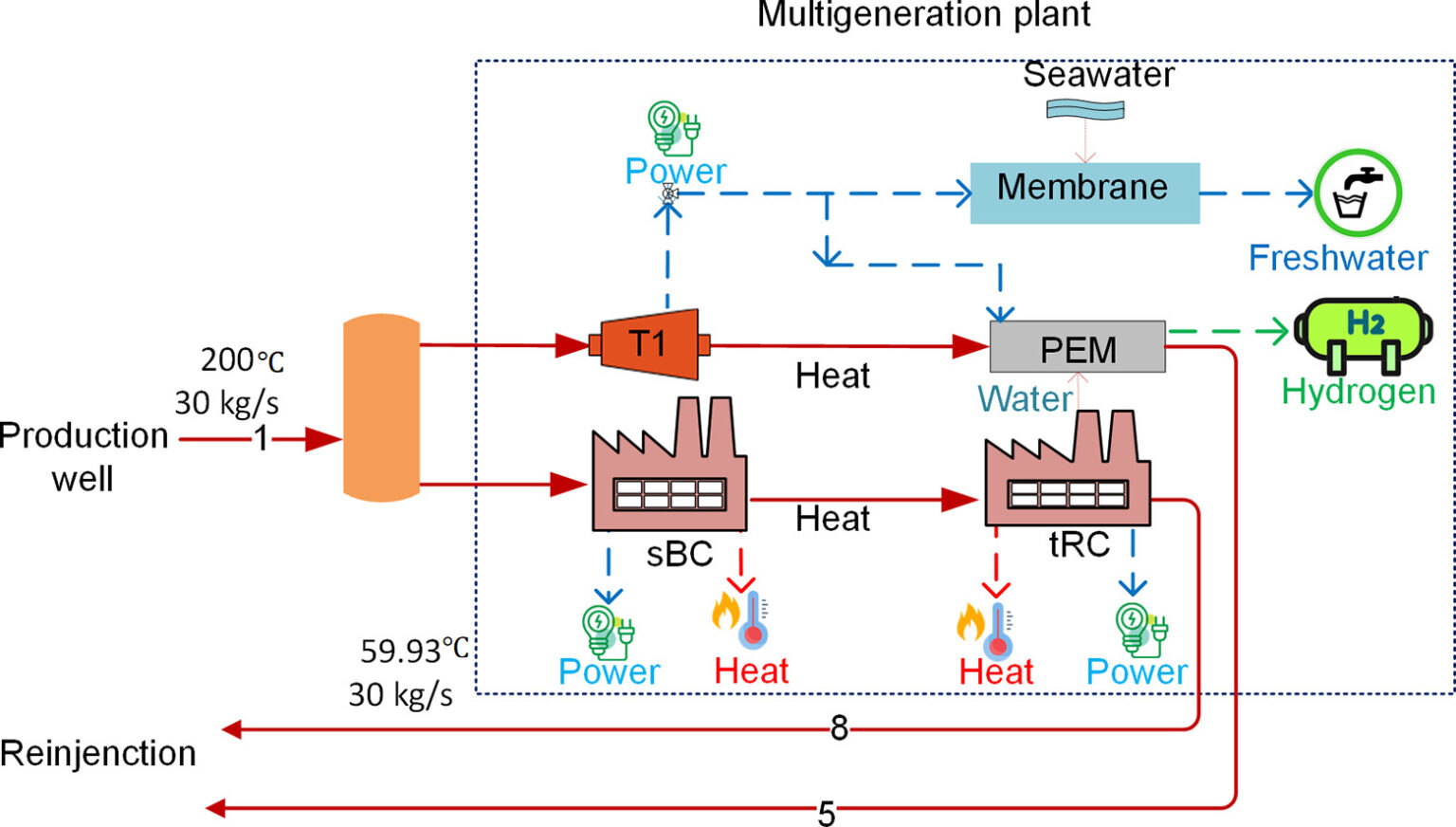In a world where CO2 emissions reached 31.5 gigatons in 2020—a stark increase from pre-industrial levels—the quest for sustainable energy solutions is paramount. As traditional reliance on fossil fuels leads us toward ecological peril, innovative designs like a geothermal-based multigeneration plant offer a potential paradigm shift.
Through this study, conducted by Fatih Yilmaz, the use of geothermal energy with compressed hydrogen storage and multigeneration is explored, delivering an energy efficiency of 25.84% and an exergy efficiency of 31.92%.
The multigeneration plant in focus employs a supercritical carbon dioxide-based Brayton cycle (sCO2-BC) and a transcritical carbon dioxide-based Rankine cycle (tCO2-RC), alongside hydrogen production and desalination operations. By examining the integrative capabilities of such systems, the research presents a critical analysis of how power, heating, and freshwater can be simultaneously generated from a single geothermal source of 200°C. Achieving a net power output of 1128 kW, a hydrogen generation rate of 0.001693 kg s^-1, and freshwater production of 1.28 kg s^-1, the plant showcases its multivalent potential.
The economic intricacies are similarly dissected, with the study noting operational costs approximating $149.1 per hour and a hydrogen production cost of $1.479 per kilogram. These figures highlight the potential economic hurdles while underscoring the feasibility of geothermal hydrogen production as a cleaner alternative to fossil fuels. The considerable potential of saving 7174 tons of CO2 annually emphasizes the plant’s environmental credentials when compared to natural gas generation.
The research underscores the increasing importance of hydrogen as a clean energy vector, particularly within multigeneration plant frameworks. Hydrogen’s flexibility not only as an energy carrier but also as a raw material, has garnered global interest. The study critiques existing energy policies and posits geothermal-enhanced hydrogen production as a viable route for low-emission strategies.
This analysis dives into the multifaceted integration of sustainable technologies and renewable sources, stressing that efficiency improvements are pivotal. The plant design offers a method to circumvent the high emissions of traditional power sources while providing a foundation for more sustainable industrial processes. It exemplifies how multigeneration approaches can align with global sustainable energy transitions, encouraging further research into optimizing such systems for broader applications.
Supporting infrastructures, like reverse osmosis for desalination, highlight the plant’s capability to deliver comprehensive renewable solutions beyond energy production. As energy demands surge alongside environmental imperatives, such advancements invite a reimagined understanding of energy systems—prompting policymakers and researchers alike to critically appraise sustainable solutions bridging the gap between ambition and implementation.





